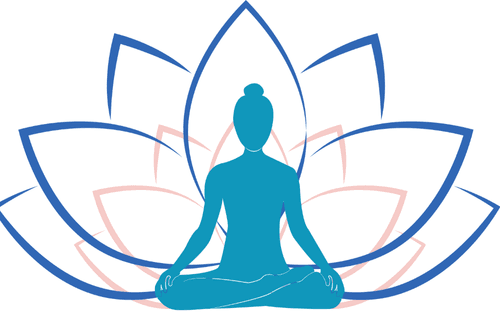Understanding Depression and the Role of Yoga
Depression is a complex mental health disorder characterized by persistent feelings of sadness, hopelessness, and a lack of interest or pleasure in daily activities. Its symptoms can significantly disrupt an individual’s ability to function, affecting work, relationships, and overall quality of life. Common symptoms include fatigue, sleep disturbances, changes in appetite, and difficulty concentrating, all of which can create a pervasive sense of distress and isolation. Understanding the multifaceted nature of depression is essential in formulating effective coping mechanisms.
Many individuals grappling with depression may struggle to identify effective strategies to manage their symptoms. It is crucial to explore a range of interventions, as what works for one person may not suit another. This need for personalized treatment underscores the importance of holistic approaches, where mind and body are treated as interconnected rather than separate entities. One such approach gaining recognition is yoga, an ancient practice that integrates physical postures, breathing exercises, and meditation.
The practice of yoga has been shown to positively influence brain chemistry and emotional regulation. Through various yogic techniques, participants can experience enhanced relaxation, improved mood, and reduced anxiety. Yoga fosters mindfulness and encourages practitioners to focus on the present moment, which can be particularly beneficial for those experiencing the ruminative thinking patterns that often accompany depression. The gentle movements and breathwork stimulate the release of neurotransmitters like serotonin and endorphins, which can contribute to an uplifted mood and a sense of well-being.
Thus, recognizing yoga as a viable, natural way to alleviate depressive symptoms offers a valuable avenue for those seeking to enhance their mental health. Incorporating yoga into a daily routine may facilitate greater emotional balance, providing individuals with tools to navigate their depressive experiences more effectively. This mind-body connection fosters resilience and empowerment, paving the way for a more positive outlook on life.
Heart-Opening Poses: Embracing Vulnerability
Heart-opening poses serve as a significant yet often overlooked component of yoga, particularly beneficial for those experiencing depression. These postures emphasize the expansion of the chest and the breathing space around the heart, enabling practitioners to embrace vulnerability and release stored emotional tension. By creating physical space in the chest area, heart-opening asanas facilitate emotional expression, allowing individuals to confront and transform deep-seated feelings of anxiety and sadness into compassion and love.
Several specific poses are renowned for their ability to effectively open the heart space. For instance, Urdhva Mukha Svanasana (Upward-Facing Dog) and Bhujangasana (Cobra Pose) invite an elevation of the chest while enhancing spinal flexibility. Another beneficial pose is Anahatasana (Heart Melting Pose), which encourages surrender and vulnerability, fostering a sense of openness to both oneself and others. By incorporating these heart-opening postures into a regular yoga practice, individuals can relieve emotional blockages that often accompany feelings of depression.
Scientific studies have demonstrated significant emotional benefits linked to these poses. Research indicates that heart-opening yoga can decrease levels of stress and anxiety, contributing to improved mood and mental well-being. The physical act of opening the heart can lead to a release of endorphins and oxytocin, neurotransmitters known to play a vital role in enhancing feelings of happiness and connection. Additionally, practicing yogic breath (pranayama) in conjunction with heart-opening poses enhances the flow of energy through the body, further supporting emotional healing.
In light of these insights, integrating heart-opening poses within a yoga routine may serve as a natural and holistic approach to counteracting feelings of depression, fostering a deeper sense of connection with oneself and the world around us.
Grounding Postures: Cultivating Stability
Grounding postures in yoga are essential for fostering a sense of balance and stability, both physically and mentally. These poses serve as a foundation for individuals seeking to alleviate feelings of anxiety and enhance their mood. By promoting a connection to the earth, grounding postures help practitioners cultivate a sense of safety and calm, which can be particularly beneficial for those grappling with depression. The act of rooting oneself in these poses can create an anchoring effect, allowing individuals to manage overwhelming emotions more effectively.
One of the primary benefits of grounding postures is their ability to promote relaxation. As practitioners navigate these poses, they engage their body’s core muscles, which can help to release tension and increase overall awareness of their physical presence. This heightened awareness is crucial for grounding, as it allows individuals to process their emotions and thoughts without becoming overwhelmed. Furthermore, grounding postures often encourage deep, mindful breathing, which has been shown to lower cortisol levels and enhance feelings of tranquility.
Several effective grounding poses can be incorporated into regular practice. Tadasana (Mountain Pose) encourages stability and alignment through standing tall, while Balasana (Child’s Pose) fosters a sense of safety and surrender. Additionally, Vrksasana (Tree Pose) challenges balance, requiring focus and concentration, which can divert attention from anxious thoughts. Practitioners should approach these poses with care; it is advisable to maintain a steady breath and leave time for rest in between poses to avoid physical strain.
In conclusion, integrating grounding postures into a yoga practice can significantly enhance mood and mental well-being. By focusing on stability and balance, individuals can develop a more profound sense of connection to themselves and their environment, ultimately promoting relaxation and emotional resilience.
Energizing Breathwork: Uplifting the Spirit
Breathwork, an integral component of yoga practice, serves as a powerful tool for enhancing mood and energy levels. By focusing on conscious breathing techniques, individuals can positively impact their emotional state, effectively combating feelings of depression. Breathwork techniques such as Ujjayi breath, Kapalabhati, and Nadi Shodhana not only invigorate the body but also foster a deeper connection to the mind and spirit. When practiced regularly, these breathing exercises can lead to improved mood, increased vitality, and a sense of well-being.
To harness the benefits of breathwork in a structured manner, one can follow a 45-minute yoga session specifically designed to uplift the spirit. Begin by finding a comfortable seated position. As you settle into your space, practice Ujjayi breath for five minutes to cultivate a tranquil environment. Inhale deeply through the nose, constricting the throat slightly, and exhale with a soft sound, allowing the breath to flow naturally.
Next, transition to a series of heart-opening poses such as Cobra Pose (Bhujangasana) and Bridge Pose (Setu Bandhasana) for approximately 10 minutes, all while maintaining a steady breath. These postures not only stretch the chest but also encourage emotional release. Follow this with grounding postures like Mountain Pose (Tadasana) and Child’s Pose (Balasana) for another 10 minutes to promote stability.
Incorporate energizing breathwork by practicing Kapalabhati, the breath of fire, for five minutes. This vigorous technique livens the mind and spirit. Lastly, conclude your session by practicing Nadi Shodhana for 10 minutes, balancing the energy channels within the body while focusing on calming the mind. This structured session, combining breathwork and targeted poses, can serve as an effective ritual to sustain positivity and alleviate symptoms of depression.



